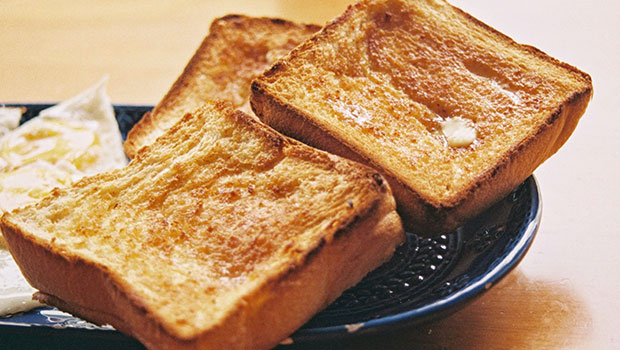Bread is arguably the best carb (and rice possibly the worst, but that’s a story for another day). Whether enjoyed as is in a sandwich, reinvented in a pudding or added to meatballs, the flavour of plain white bread is mild enough to be adapted in multiple ways. You can also mix things up with the bread itself by using rye, wholewheat or even coconut or almond flour, depending on your flavour preference and dietary requirements. No matter what type of bread you prefer, its beauty lies in the contrast between the crunchy exterior and soft interior. But perhaps the best way to enjoy bread – especially store-bought white bread – is toasted.
This should be easy, right? You just pop it into the toaster and the job’s done. Ah, if only it were that simple. Leave it for a minute too long and you end up with something charred that crumbles when you bite into it (although I’ve heard some people prefer it that way). A few seconds too few and you find yourself with a surface-level crunch that promises more than it delivers. Toasting bread is an art and a science – quite literally when it comes to the latter.
Food turns brown when heated because of the Maillard reaction, a chemical reaction between proteins and sugars. Leave food cooking for too long and its chemical makeup will change so much that you’ll be left with charcoal. This change in chemical composition doesn’t affect only the colour of food; it also affects its texture and flavour.
While many of us use the toaster to toast bread as it’s inexpensive and efficient, you can toast your bread in an oven or on a stovetop. The only condition needed for the Maillard reaction to work is dry heat. You’ll need to explore the settings on your toaster or oven and stove, but start at a midway point and work it out from there. If your appliances are colder in the morning, it may take a little longer to toast – but keep a careful eye on it so that it doesn’t burn! If you’re making a second batch, with your appliance now heated up so well, you run the risk of the opposite happening – in this case, I usually lower the heat setting. Either way, when using a toaster, it’s better to start at a lower setting and pop the bread in a few times than to risk burning it at a setting of five or higher.
On the stovetop, you’ll want to make sure your pan is on a medium-high heat and well-greased with butter and/or oil. In the oven, there are two methods you can use. First, the grill setting. This method is very quick, so don’t move away from your oven – about two minutes on each side is all it will take. Alternatively, if you have time, you can slow-toast at 180°C in the middle of the oven. This will take about 10 minutes, but it gives you maximum control so you end up with toast that is perfectly golden-brown and crunches when you bite into it but is still soft enough to absorb the most important topping: butter.
You can substitute butter with margarine, but I promise you: almost nothing beats the flavour of lightly salted butter. Be sure to soften the butter beforehand and spread it on your toast as soon as it’s ready. If you’re a planner, you’ll have left the butter at room temperature overnight; otherwise, a few seconds on the defrost setting in your microwave will also do the job – but only for a few seconds. This is essential: if your butter isn’t soft enough (or your toast isn’t warm enough), you’ll be left with chunks of butter rather than the perfect marriage of crunchy toast and silky melted butter.
See? I told you making toast is an art and a science! Once you’ve mastered the art of making toast, spice it up with these recipes:
Seed bread toast with avocado and poached egg
Figs and cottage cheese on toast
Grown-up cheese and steak toastie
Triple-decked toasted tuna sandwich

